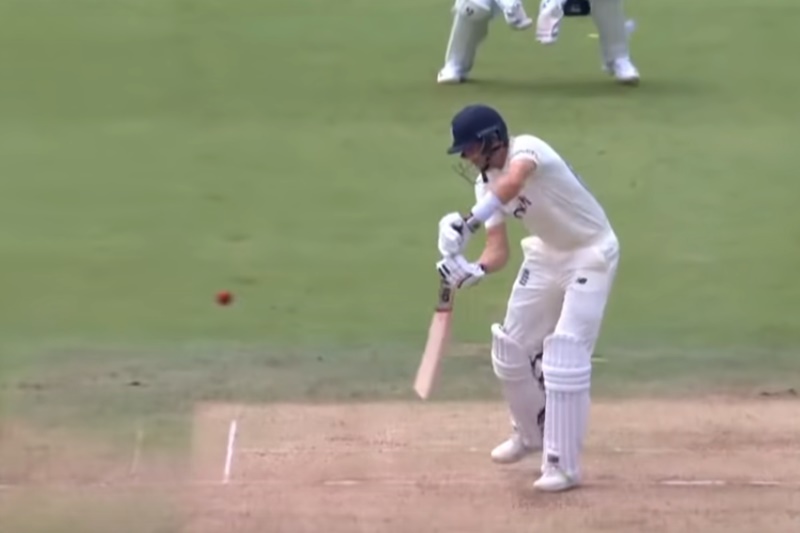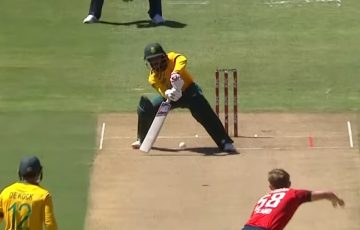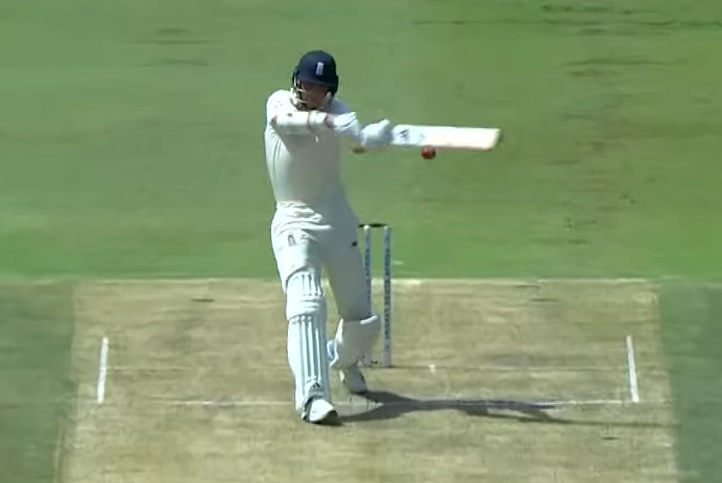“Oh that’s a nothing shot,” they say – but only when you get out to it.
We were thinking about this particular shot of Joe Root’s after watching the BBC highlights the other day.
The BBC highlights are an hour long and with no ads, it’s what you might call a ‘good hour’ rather than the 42-minute timespan you may well perceive as being a TV hour.
Even so, this particular shot of Root’s seemed to account for about a third of the footage.
It wasn’t one particular eye-catching stroke that they replayed endlessly. It was one, mundane nudge that he himself replayed endlessly.
England now seem to have started producing pretty dense, targeted highlights montages for social media. The one for Root’s latest hundred illustrates the frequency of this little shot of his even more starkly.
There’s actually probably two shots you’ll notice. The one we’re not talking about is the manufactured work to leg. This shot is sufficiently whippy that Root is almost as likely to attract the adjective ‘wristy’ as an Asian batter who absolutely does not use their wrists at all. (Trust us, that’s pretty wristy.)
(Quick digression on wristiness. It occurs to us that as well as being a quality that is attributed to batsmen more on the basis of ethnicity than technique, there are also specific ways of using the wrists that are for some reason considered wristier than others. For example, Root’s method – suddenly closing the face to manoeuvre the ball into the leg side – is far more likely to attract the term than Jos Buttler’s golf chip power snap which is typically deployed within an otherwise straightforward full-face-of-the-bat type stroke.)
The shot we’re talking about here is however the off-side drop-nudge for a single. You know the one. Watch the video and you’ll know the one.
The ball is on – or more likely just outside – off stump. Displaying the full inside-edge of his bat, Root pushes at it with no real force. The ball limply plops towards a patch of grass where nobody is standing and he runs to the other end. That’s it.
Sometimes he plays it off the front foot. Sometimes he plays it off the back foot. Sometimes he plays it to pace. Sometimes he plays it to spin. Sometimes he sort of jumps backwards and plays it on the move, springing forward into the run as he lands.
In a way it is many shots, but it is also in another sense just the one shot. Because it is a shot that if he were ever to get out to it – ball nowhere near the stumps, bat angled to entice the slip fielders, nothing much to be gained bar a single run – the commentators would be duty-bound to describe it as “a nothing shot”.
Yet repeated frequently and reliably enough, Root’s nothing shot keeps him scoring until he has yet another hundred.
You could be tempted to call it a bread and butter shot. Except that would only really make sense if everyone else thought that eating bread and butter could get you killed.





Shouldn’t, by definition, a nothing shot get you nothing? If Root’s shot gets him a single, it is a something shot. Something isn’t nothing – if you go around claiming so, you’ll empty philosophy departments in universities. Or worse, be accepted in one of them.
Can you assign a run outcome to a shot though? What if you play a “one shot” and then it goes through the fielder’s legs for four?
Sometimes a shot gets more runs than it deserves. Sometimes it gets less, and you say it’s “really good fielding” – in fact that’s pretty much, dismissals aside, exactly what “good fielding” is defined as?
For those who like cricket reportage to be less about cricket and more about other stuff, my Lord’s Test piece is now up:
https://ianlouisharris.com/2021/08/16/several-testing-days-at-lords-white-city-12-to-16-august-2021/
The tennis coverage therein – Ged Ladd & The Doctors Of Leamington Feat. Mr Johnny Friendly, is worth the price of admission (nothing) alone.
The nicknames for your chums could be characters from early 1960s Peter Sellers films.
In my mind, Ged Ladd & The Doctors Of Leamington should have been a proto-punk band in the 1970s.
One of those bands that was much better in theory than in practice.
He’s done it against the wrong team, but Darren Stevens keeps on doing it.